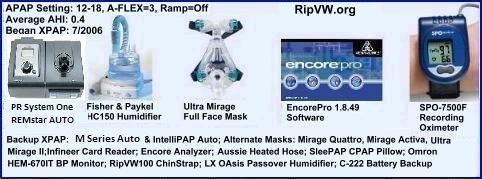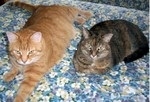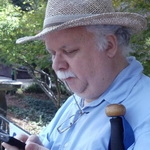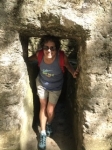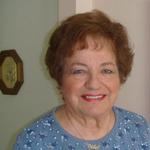What do I need to know?
-
Agape=Love
- Posts: 32
- Joined: Fri Sep 04, 2009 12:17 pm
What do I need to know?
I have been reading this site religiously to get insight into the needs, problems and triumphs of apnea patients.
I have contributed when I felt it was appropriate and even had the great opportunity to meet and test a patient from this forum.
I have started a sleep center in Denver (my second, first was in Las Vegas NV). This time I would like to take a different approach.
The first and I feel most important from a patient stand point (and this forum could really help) is "What do I need to know" from my stand point as well as the you the patient.
Most patients who are diag. with apnea and go onto PAP never seen their sleep report, those that do don't understand it. I feel this is important in helping them understand what went on during the study and why PAP treatment is important. I am in the process of developing a patient end report and would value any imput on this.
Things I have considered:
Providing patients with their sleep statistics compared to a normal sleep statistic so they can see how it compares.
Providing graphs (pie) to give a visual of the statistic.
Screen shot's of the actual study (raw data). another visual aid in understanding their disorder. (this method helped recently helping a patient understand a very complex onset central mixed with UARS) which didn't show on the report.
Something that has been debated in our lab is whether to put a tv in the room or not. I am against it personally (if we are trying to educate people about proper sleep hygiene and put a tv in their room seems a little silly to me) but patients are asking for it and most of our competitors have them on their wall.
I want people to be as comfortable here as possible.. Should we put in a tv or stick with reading material?
Your input would be greatly appreciated!!!
Agape
I have contributed when I felt it was appropriate and even had the great opportunity to meet and test a patient from this forum.
I have started a sleep center in Denver (my second, first was in Las Vegas NV). This time I would like to take a different approach.
The first and I feel most important from a patient stand point (and this forum could really help) is "What do I need to know" from my stand point as well as the you the patient.
Most patients who are diag. with apnea and go onto PAP never seen their sleep report, those that do don't understand it. I feel this is important in helping them understand what went on during the study and why PAP treatment is important. I am in the process of developing a patient end report and would value any imput on this.
Things I have considered:
Providing patients with their sleep statistics compared to a normal sleep statistic so they can see how it compares.
Providing graphs (pie) to give a visual of the statistic.
Screen shot's of the actual study (raw data). another visual aid in understanding their disorder. (this method helped recently helping a patient understand a very complex onset central mixed with UARS) which didn't show on the report.
Something that has been debated in our lab is whether to put a tv in the room or not. I am against it personally (if we are trying to educate people about proper sleep hygiene and put a tv in their room seems a little silly to me) but patients are asking for it and most of our competitors have them on their wall.
I want people to be as comfortable here as possible.. Should we put in a tv or stick with reading material?
Your input would be greatly appreciated!!!
Agape
Re: What do I need to know?
Based on a recent poll here in our forum, of those who responded, about half have a TV in their room, about half do not. I think the answer lies in your desire to make patients comfortable, so if there are some/many who need a TV to get sleepy like they do at home, then it should be available in the sleep study room. My sleep lab room had one, and it helped, since I had to lay there for almost an hour waiting for the tech to get to me to hook me up.


Re: What do I need to know?
People do not need to turn the TV on if they are not used to watching TV at bedtime. Some would enjoy a "private" TV in their room, for the wait before they are hooked up and ready to get into bed.
You could cite the poll that took place here and say that there a 50/50 draw about watching TV in bed and, with the option available, they can make their own choice.
You could cite the poll that took place here and say that there a 50/50 draw about watching TV in bed and, with the option available, they can make their own choice.
_________________
| Machine: DreamStation Auto CPAP Machine |
| Mask: AirFit™ P10 Nasal Pillow CPAP Mask with Headgear |
| Humidifier: DreamStation Heated Humidifier |
| Additional Comments: Backups- FX Nano masks. Backup machine- Airmini auto travel cpap |
- JohnBFisher
- Posts: 3821
- Joined: Wed Oct 14, 2009 6:33 am
Re: What do I need to know?
I will need to add more, but definitely add the TV. Also add the chair and good lighting to allow someone to sit and read for a bit. I can no longer read before bedtime. My eyes now dance about too much at that time of night. So I (and I suspect many other folks) have switched to watching TV to help take my mind off the cares of the day.
The current sleep center I use also offers light snacks (crackers, chips, cookies) and water (and I think I remember some juice). It's a nice touch and does not cost a lot.
I certainly do encourage offering more patient information. Some people will be interested. It certainly can be something the sleep techs discuss as they hook up the patient. As you know (and as I've heard from others here) the better sleep techs do that. They love what they do and want to help the patient as much as possible.
A simple, printed handout presentation that someone can take home would help. You are right that showing people all of their sleep study won't help. But it does help explain that it's not just guess work and how important getting the therapy right matters.
Of course, some people could care less about the details. My mother is like that. As long as she sleeps well she is not overly interested in all the details. Fortunately she has few problems and is able to be compliant without much effort.
And there are nuts like many of us here who want to UNDERSTAND the process, the results and the reasons behind all of it.
As you know, you will see a wide range. Assume you will present at least a handout. If they are not interested "now" they may be later. Having information availabile and a pointer on where to get more would help everyone.
Good luck with your endeavor!
The current sleep center I use also offers light snacks (crackers, chips, cookies) and water (and I think I remember some juice). It's a nice touch and does not cost a lot.
I certainly do encourage offering more patient information. Some people will be interested. It certainly can be something the sleep techs discuss as they hook up the patient. As you know (and as I've heard from others here) the better sleep techs do that. They love what they do and want to help the patient as much as possible.
A simple, printed handout presentation that someone can take home would help. You are right that showing people all of their sleep study won't help. But it does help explain that it's not just guess work and how important getting the therapy right matters.
Of course, some people could care less about the details. My mother is like that. As long as she sleeps well she is not overly interested in all the details. Fortunately she has few problems and is able to be compliant without much effort.
And there are nuts like many of us here who want to UNDERSTAND the process, the results and the reasons behind all of it.
As you know, you will see a wide range. Assume you will present at least a handout. If they are not interested "now" they may be later. Having information availabile and a pointer on where to get more would help everyone.
Good luck with your endeavor!
_________________
| Mask: Quattro™ FX Full Face CPAP Mask with Headgear |
| Additional Comments: User of xPAP therapy for over 20 yrs. Resmed & Respironics ASV units with EEP=9cm-14cm H2O; PSmin=4cm H2O; PSmax=15cm H2O; Max=25cm H2O |
"I get up. I walk. I fall down. Meanwhile, I keep dancing” from Rabbi Hillel
"I wish to paint in such a manner as if I were photographing dreams." from Zdzisław Beksiński
"I wish to paint in such a manner as if I were photographing dreams." from Zdzisław Beksiński
Re: What do I need to know?
Our sleep center has a tv in each room, but you don't have to use it. I rarely watch tv and never in bed, but there are those who like to. The problem I find is there is no comfortable setup for reading while waiting to be hooked up. An easy chair with light would be grand as would a bedside reading light.
Certainly have educational material is necessary as is being able to see the results of the sleep studies.
Good luck, and please keep us posted on what you decide to provide.
Certainly have educational material is necessary as is being able to see the results of the sleep studies.
Good luck, and please keep us posted on what you decide to provide.
_________________
| Mask: FlexiFit HC431 Full Face CPAP Mask with Headgear |
| Additional Comments: nasel pillows SwiftLT, no software, machine is REMstar auto A-Flex, Respironics system one heated humidifier |
- rosiefrosie
- Posts: 680
- Joined: Tue Mar 07, 2006 7:05 pm
- Location: MN
Re: What do I need to know?
I like watching TV at bed time. In fact it is usually the only time I watch TV. As others have said if you don't want to watch TV you don't have to turn it on.
rosie
rosie
_________________
| Mask: DreamWear Nasal CPAP Mask with Headgear - Fit Pack (All Cushions Included with Medium Frame) |
| Humidifier: DreamStation Heated Humidifier |
| Additional Comments: 7.4 pressure setting |
-
Agape=Love
- Posts: 32
- Joined: Fri Sep 04, 2009 12:17 pm
Re: What do I need to know?
So far everyone thinks tv in the room is the choice, (my partner is pushing me to put them up to)
I was worried I would get this kinda of feed back... I guess my reasoning is that we are sleep professionals and trying to create an environment ideal for sleeping, and encourage (preach) proper sleep hygiene. It kinda makes me feel like a pulmonary doc telling their patient they have COPD for the first time and lighting up a cigarette. I am just concerned about sending the wrong message when I know the message. (see below and there are many many more links and literature that speaks about the negative effects of a tv in the bedroom in regards to sleeping).
http://www.mnsu.edu › ... › Students › In House Resources
http://www.24-7pressrelease.com/.../fal ... 121903.php
http://www.dailymail.co.uk/.../Bad-nigh ... blame.html
http://www.aasmnet.org/Articles.aspx?id=370
Still on the fence about the TV (however thanks so much for the feed back)
As far as during the hook up we have a comfortable chairs. I typically like to use this time to get to know the patient talk about the study and what the purpose of all the wires...
We actually go a bit further with our morning wake up and offer a small breakfast. (We converted a downtown loft into a lab which has a full kitchen) which is available to the patient as well.
Thought I would get more feed back about the patient end report (particularity on this forum)?
Agape
I was worried I would get this kinda of feed back... I guess my reasoning is that we are sleep professionals and trying to create an environment ideal for sleeping, and encourage (preach) proper sleep hygiene. It kinda makes me feel like a pulmonary doc telling their patient they have COPD for the first time and lighting up a cigarette. I am just concerned about sending the wrong message when I know the message. (see below and there are many many more links and literature that speaks about the negative effects of a tv in the bedroom in regards to sleeping).
http://www.mnsu.edu › ... › Students › In House Resources
http://www.24-7pressrelease.com/.../fal ... 121903.php
http://www.dailymail.co.uk/.../Bad-nigh ... blame.html
http://www.aasmnet.org/Articles.aspx?id=370
Still on the fence about the TV (however thanks so much for the feed back)
As far as during the hook up we have a comfortable chairs. I typically like to use this time to get to know the patient talk about the study and what the purpose of all the wires...
We actually go a bit further with our morning wake up and offer a small breakfast. (We converted a downtown loft into a lab which has a full kitchen) which is available to the patient as well.
Thought I would get more feed back about the patient end report (particularity on this forum)?
Agape
Re: What do I need to know?
I think I speak for all of us when I say thank you for trying to make a sleep center that knows what they are doing!
_________________
| Machine: ResMed AirSense™ 10 AutoSet™ CPAP Machine with HumidAir™ Heated Humidifier |
| Mask: AirFit™ P10 Nasal Pillow CPAP Mask with Headgear |
| Additional Comments: 15-18 cm, EPR 1, PAPcap |
Sleep well and live better!
Re: What do I need to know?
All very good ideas. Add info about normal oxygenation.Providing patients with their sleep statistics compared to a normal sleep statistic so they can see how it compares.
Providing graphs (pie) to give a visual of the statistic.
Screen shot's of the actual study (raw data). another visual aid in understanding their disorder. (this method helped recently helping a patient understand a very complex onset central mixed with UARS) which didn't show on the report.
I would add to that a focus on the fact that you are dealing with a breathing difficulty. People tend to thind of it as a sleep difficulty, which it is, but then some respond with "I'm not tired, I'm not sleepy; I'll manage with naps." Use the work choke, and definitely show some parts of the actual study -- not only raw data, but a video clip or two to go with it.
"Apnea" is a context-less word until we're far into this issue. "Choking" or "Having trouble breathing" or "fighting to breathe" are experessions that ring many alarm bells for us. And you want to the person to hear those bells.
O.
_________________
| Mask: AirFit™ P10 Nasal Pillow CPAP Mask with Headgear |
| Additional Comments: Machine: Resmed AirSense10 for Her with Climateline heated hose ; alternating masks. |
And now here is my secret, a very simple secret; it is only with the heart that one can see rightly, what is essential is invisible to the eye.
Antoine de Saint-Exupery
Good advice is compromised by missing data
Forum member Dog Slobber Nov. 2023
Antoine de Saint-Exupery
Good advice is compromised by missing data
Forum member Dog Slobber Nov. 2023
Re: What do I need to know?
I think the end report is a wonderful idea. My husband had his sleep study, I came to get him in the morning, tech said he was not allowed to tell us anything except that his study was "not normal",( scared us to death), that he would need a "titration"?, and we would then be given an RX and referred to a DME for equipment?. As for the TV, it was comforting in a way to be connected to the outside world for awhile as we waited for the tech to come in. There's time later to learn about sleep hygiene when you're better able to absorb everything else about this new way of life. It was also nice to smell the coffee when I arrived back in the morning. Good luck on your new venture.
_________________
| Mask: Mirage Quattro™ Full Face CPAP Mask with Headgear |
| Additional Comments: 14/8.4,PS=4, UMFF, 02@2L, |
"Do or Do Not-There Is No Try"-"Yoda"
"We are what we repeatedly do,so excellence
is not an act but a habit"-"Aristotle"
DEAR HUBBY BEGAN CPAP 9/2/08
"We are what we repeatedly do,so excellence
is not an act but a habit"-"Aristotle"
DEAR HUBBY BEGAN CPAP 9/2/08
- SleepingUgly
- Posts: 4690
- Joined: Sat Nov 28, 2009 9:32 pm
Re: What do I need to know?
I like your idea of showing norms. Here is my suggestions for your reports:
Somewhere at the beginning of the report you would provide the definitions of the terms you use, such as apnea, hypopnea, RERA, Periodic Limb Movements, etc.
Remember how I created a summary sheet of all the data I was provided on my sleep studies and then dug up the meanings of the terms used and the norms so I'd know what each score meant and what was "abnormal"? (here is the link again: viewtopic.php?f=1&t=47828&p=436955&hili ... is#p433704)
What I did was not pretty, and it encompassed several studies, but I think you could have on your reports something like this (columns are not coming out in here, but basically a column with their score and then a column that you label "normal". You could also write the ranges for diagnoses of "mild", "moderate", and "severe" apnea):
AHI (Apnea Hypopnea Index - # of apneas + # of hypopneas per hour)............... 64 Normal: ............... <5
Back Index (# of respiratory events on back per hour) ................................. 85 Normal: ............... <5
REM Index ...
etc.
As far as I can remember, sleep technicians dictate when it's lights out. So that's when the TV has to be turned off. Just because you're providing TV doesn't mean you recommend they watch TV in bed (eg, you might allow them to have a snack before bed if that's what they usually do, even though you personally might not think people should eat before bed). They might need to watch TV to occupy themselves when you attach them up to all the cords. Also, I don't know if you're going to have kids come to your lab, but TV is very helpful for kids when you're having to hook them up. Some sleep centers even have DVD movies for kids in the rooms.
Somewhere at the beginning of the report you would provide the definitions of the terms you use, such as apnea, hypopnea, RERA, Periodic Limb Movements, etc.
Remember how I created a summary sheet of all the data I was provided on my sleep studies and then dug up the meanings of the terms used and the norms so I'd know what each score meant and what was "abnormal"? (here is the link again: viewtopic.php?f=1&t=47828&p=436955&hili ... is#p433704)
What I did was not pretty, and it encompassed several studies, but I think you could have on your reports something like this (columns are not coming out in here, but basically a column with their score and then a column that you label "normal". You could also write the ranges for diagnoses of "mild", "moderate", and "severe" apnea):
AHI (Apnea Hypopnea Index - # of apneas + # of hypopneas per hour)............... 64 Normal: ............... <5
Back Index (# of respiratory events on back per hour) ................................. 85 Normal: ............... <5
REM Index ...
etc.
As far as I can remember, sleep technicians dictate when it's lights out. So that's when the TV has to be turned off. Just because you're providing TV doesn't mean you recommend they watch TV in bed (eg, you might allow them to have a snack before bed if that's what they usually do, even though you personally might not think people should eat before bed). They might need to watch TV to occupy themselves when you attach them up to all the cords. Also, I don't know if you're going to have kids come to your lab, but TV is very helpful for kids when you're having to hook them up. Some sleep centers even have DVD movies for kids in the rooms.
_________________
| Mask: Swift™ FX For Her Nasal Pillow CPAP Mask with Headgear |
| Humidifier: S9™ Series H5i™ Heated Humidifier with Climate Control |
| Additional Comments: Rescan 3.10 |
Never put your fate entirely in the hands of someone who cares less about it than you do. --Sleeping Ugly
-
ScrappinMom
- Posts: 160
- Joined: Tue Aug 18, 2009 6:44 pm
- Location: Oklahoma
Re: What do I need to know?
Well, really the main objective of a sleep study is for the patient to sleep, right? So, I think the more you can replicate their normal sleeping habit, the better. Being hooked up to 1000 wires, with a camera looking at you, and in a strange bed can hardly be considered good sleep hygiene.Agape=Love wrote:I was worried I would get this kinda of feed back... I guess my reasoning is that we are sleep professionals and trying to create an environment ideal for sleeping, and encourage (preach) proper sleep hygiene. It kinda makes me feel like a pulmonary doc telling their patient they have COPD for the first time and lighting up a cigarette. I am just concerned about sending the wrong message when I know the message. (see below and there are many many more links and literature that speaks about the negative effects of a tv in the bedroom in regards to sleeping).
I for one, did not go to sleep my first sleep study until 2:00 AM!!! I was absolutely miserable. I always, always, watch tv in bed. Whether its good or not, I don't care. That's my habit. It surely would've helped me go to sleep that night to have one.
Just my 2 cents.
Re: What do I need to know?
You could use the TV to show sleep study videos, in case the techs get bored explaining what they are doing for the 1000th time
_________________
| Machine: Airsense 10 Card to Cloud |
| Mask: Swift™ FX Nasal Pillow CPAP Mask with Headgear |
| Additional Comments: Emay EMO-60 oximiter |
Re: What do I need to know?
I was fairly happy with my sleep center.
The room had a queen size bed, two night stands w/lamps, nice chair, reading lamp, small sink, and....................TV!!! (with premium cable channels!)
For those of us who DO watch TV, having one in the room is a MUST!!!
As far as giving out info to people, is that legal in your area??? My sleep center wouldn't tell me anything, even though I did ask. They said that they weren't ALLOWED TO, that I had to ask my doctor. I don't know if that's the law, or just their policy, but it is a GOOD policy. Not everyone who answers your questions, has the right answer!
The only really down side of my sleep center was the fact that they didn't have coffee for me in the morning!
The room had a queen size bed, two night stands w/lamps, nice chair, reading lamp, small sink, and....................TV!!! (with premium cable channels!)
For those of us who DO watch TV, having one in the room is a MUST!!!
As far as giving out info to people, is that legal in your area??? My sleep center wouldn't tell me anything, even though I did ask. They said that they weren't ALLOWED TO, that I had to ask my doctor. I don't know if that's the law, or just their policy, but it is a GOOD policy. Not everyone who answers your questions, has the right answer!
The only really down side of my sleep center was the fact that they didn't have coffee for me in the morning!
_________________
| Machine: AirCurve™ 10 VAuto BiLevel Machine with HumidAir™ Heated Humidifier |
| Mask: ComfortGel Blue Nasal CPAP Mask with Headgear |
Re: What do I need to know?
I vote for the tv also. I waited 2 1/2 hours for the sleep tech to hook me up the night of my titration. There was also a lamp and end table on the opposite side of the bed from the equipment so that one could read.
When I had to go back for a titration night, I took my own pillow because I hadn't been comfortable on the pillows they provided. It made it easier for me to go to sleep. Perhaps you could mention to people that they could bring their own pillow from home if they want to do so?
My sleep center also provided a continental breakfast in the lobby: coffee, danish, fruit, and power bars. This was much appreciated.
BTW, thanks for asking! The folks in your area will be lucky to have a center set up by you.
When I had to go back for a titration night, I took my own pillow because I hadn't been comfortable on the pillows they provided. It made it easier for me to go to sleep. Perhaps you could mention to people that they could bring their own pillow from home if they want to do so?
My sleep center also provided a continental breakfast in the lobby: coffee, danish, fruit, and power bars. This was much appreciated.
BTW, thanks for asking! The folks in your area will be lucky to have a center set up by you.
_________________
| Mask: Swift™ FX Nasal Pillow CPAP Mask with Headgear |
| Additional Comments: Alternate masks: Mirage Quattro, EasyLife Nasal mask |








